Author: Christine Skirbunt
Locked Out of Ownership
While women were entering the workforce in greater numbers during the latter part of the 19th century and they may have won the right to vote in 1920, this progress happened in fraught increments. It may surprise younger generations of American women today (especially those born in the 1980s and after) that until the 1970s, single women in New York City (and all over America) faced nearly insurmountable barriers to simply finding safe and independent housing on their own. The right to rent or buy without a husband came in slow, uneven steps.
Before the 1960s, under New York law, a single women could own property as far back as the 19th century, thanks to the Married Women’s Property Acts of 1848 and 1860. Or in theory, they could. In practice, landlords often refused to rent or sell to a woman living alone (often citing “respectability” concerns), mortgage lenders usually denied a single woman a loan unless a male relative co-signed (not because of any legally binding reasons, but because of overt gender discrimination meant to discourage women from trying), and co-op boards in NYC could – and often did – reject unmarried women buyers out of hand.
The plight of the single working woman was wrought with hurdles that, in retrospect, look like punishments for wanting the most basic of rights. The reason given over and over to deny w woman’s transaction was to preserve a woman’s “virtue.” This went so far in that a single woman who was traveling alone was often not permitted to check into a hotel or dine in restaurants unless a man could vouch for their character (i.e. “virtue”) (The Hidden History of NYC’s Women-Only Hotels).
All of this left many single, working women – even those with stable jobs – in a precarious position. And for women of color, especially Black women, the obstacles were even steeper due to both racial segregation and economic disenfranchisement.
Thus, it was in this environment that was born the concept of women-only hotels and residences as a compromise between independence and respectability. Though these buildings were essentially long-term apartments with communal amenities, they were often called “hotels” to distinguish them from tenement housing and to imply a certain level of supervision and moral propriety. The term was part marketing, part class distinction.
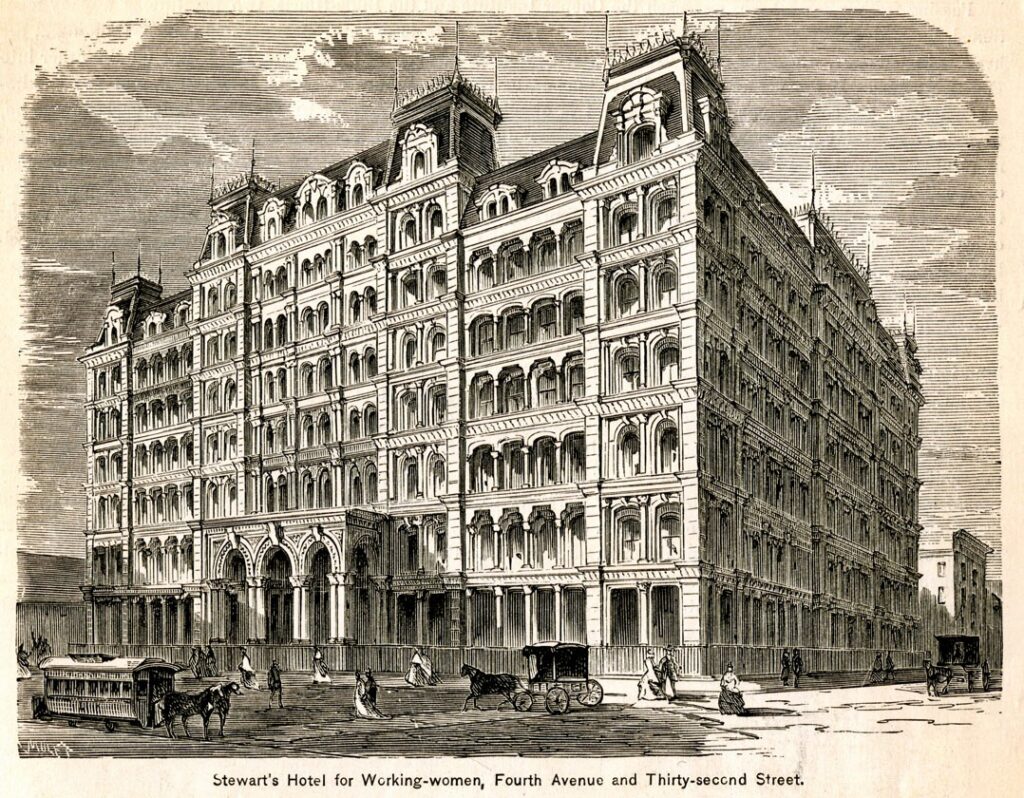
The First Experiment: The Stewart Hotel for Working Women
Irish businessman Alexander T. Stewart founded the first hotel for working women in New York City in 1878 on what is today Park Avenue. Stewart envisioned it as a place for “industrious young women…to foster individuality and self-dependence” (The Hidde History of NYC’s Women’s-Only Hotels) without relying on family or marriage while under very strict guidance.
The building was an opulent marvel, able to house 1,500 working women. But despite its elegance and lofty ideals, the Stewart Hotel was short-lived. Within months of opening, the hotel closed, and it was soon converted into the Park Avenue Hotel. The Stewart Hotel management claimed there simply wasn’t enough interest in a hotel exclusively for women, but historians today maintain there were numerous reasons for its failure, the main being that it alienated modest-income women with its very restrictive rules and oppressive social vision.
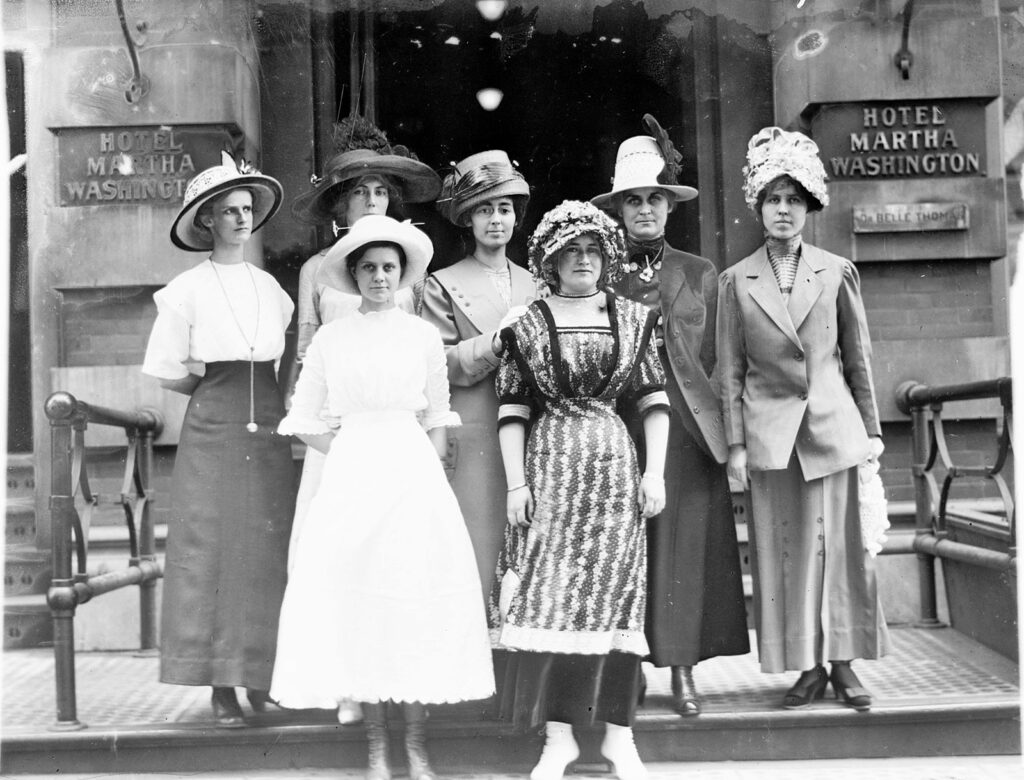
Its closure marked the end of that grandiose and overbearing concept, but it sparked a larger movement. In its wake, more sustainable women-only residences began to emerge – offering more flexibility, fewer ostentatious ideals, and more practical support for women trying to make their way in a rapidly modernizing city.
The Martha Washington Hotel: Safe Haven in the City
When The Martha Washington Hotel opened its doors in 1903 in Manhattan, it was an immediate success. The city was becoming a magnet for women seeking careers as switchboard operators, stenographers, clerks, secretaries, and teachers. Learning from The Stewart Hotel’s mistakes worked because, unlike The Stewart Hotel, The Martha Washington was fully booked within weeks and had a waiting list hundreds long.
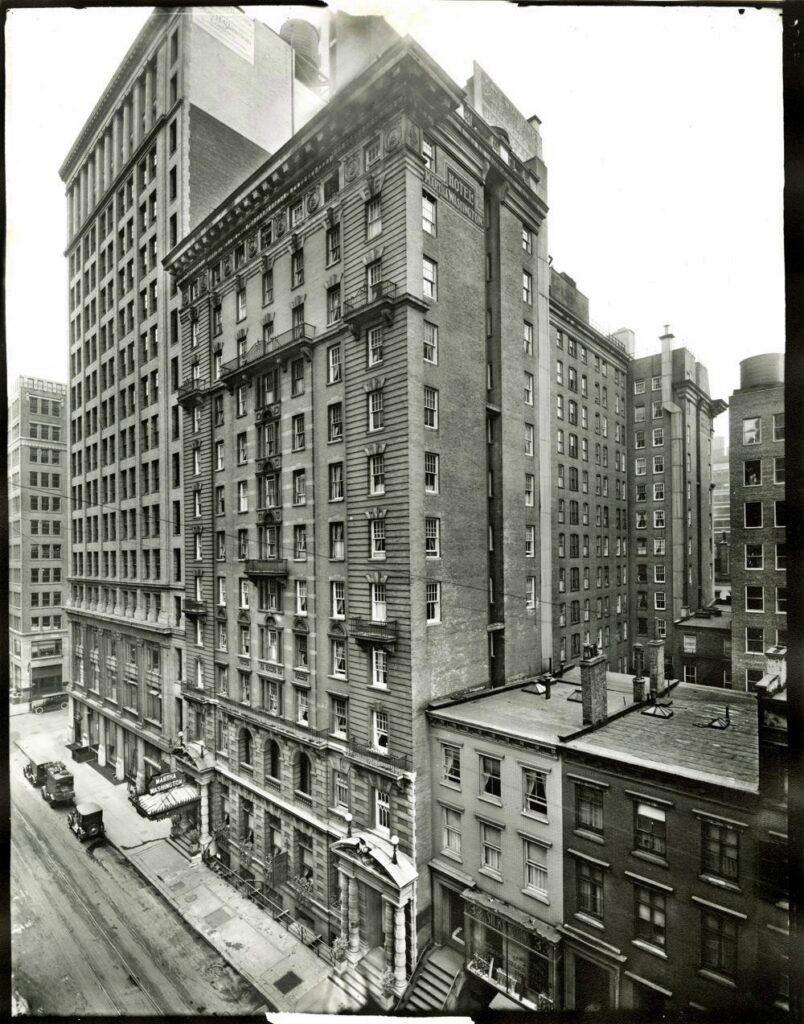
The hotel offered amenities like a dining hall, writing rooms, lounges, a pharmacy, on-site tailor and laundry services, and even a manicurist. The hotel was strict but not overbearing with house rules (On Her Own). The Martha Washington also boasted elevator service staffed, of course, by women. Men were only allowed in designated public spaces and never past certain floors. Women could stay for days or years, making it ideal for both transients and long-term residents.
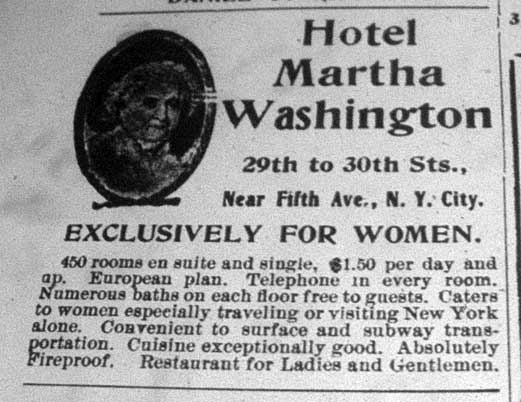
The Martha Washington became a symbol of the changing role of women in the early 20th century. It stood as a concrete declaration: a woman could live alone, work, and take up space in the city without her “virtue” jeopardized. The hotel also broke new ground when it became the headquarters of a feminist organization called the Interurban Women Suffrage Council in 1907 (On Her Own) and in 1933 it applied for a liquor license as soon as the 18th Amendment was repealed (The Hidden History of NYC’s Women-Only Hotels).
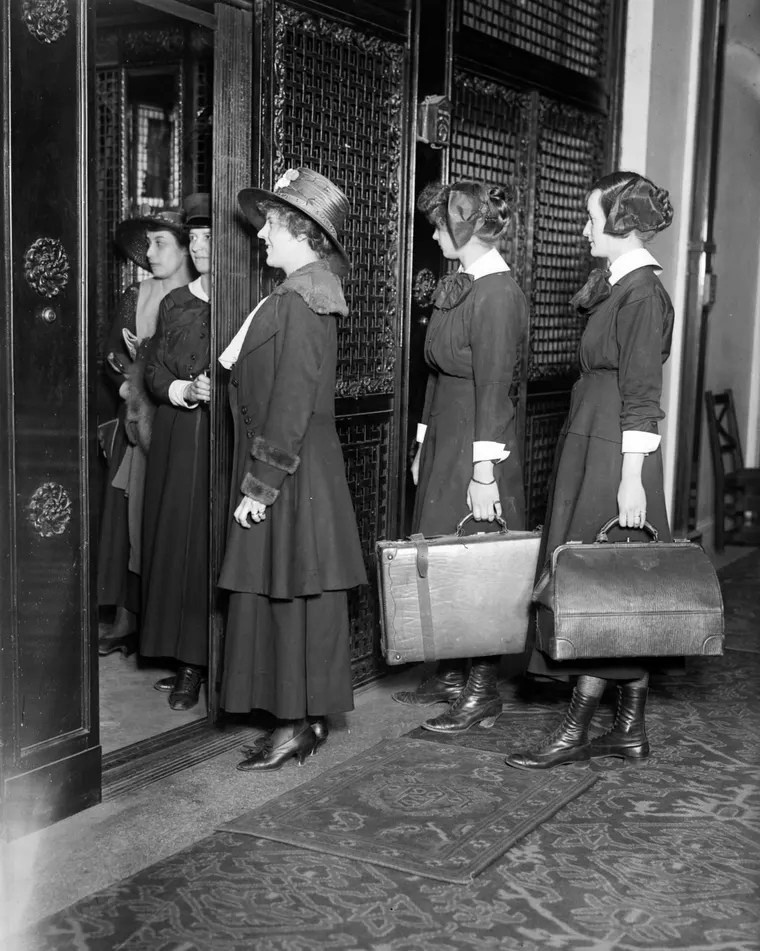
During WWI and WWII, The Martha Washington housed many female war workers and continued the tradition of hosting events for suffrage groups, professional women’s clubs, and literary gatherings during its impressive 95-years of operation until it was closed due to lack of demand and reborn as a tourist-friendly hotel.
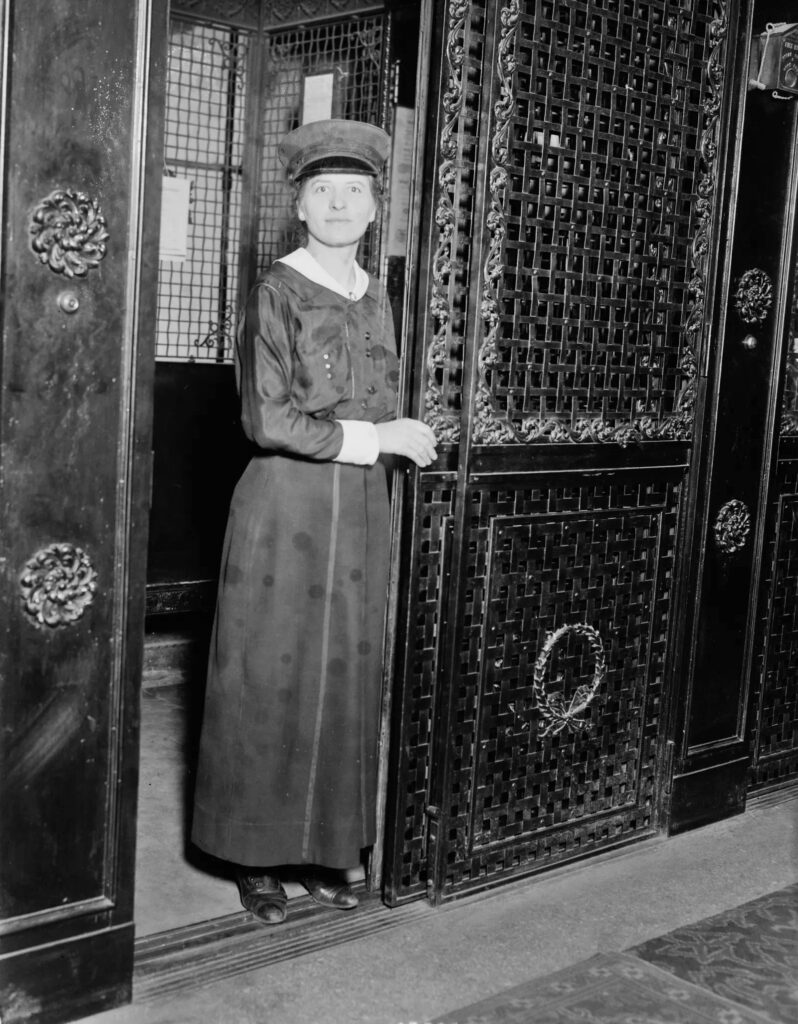
The Barbizon Hotel: Exclusivity and the Female Elite
Nicknamed “The Dollhouse,” (On Her Own) The Barbizon Hotel is perhaps the most iconic of New York’s women-only residences. Opened in 1927 on the Upper East Side, it was both a launching pad for ambitious women and a gatekeeper of elite femininity specializing in residents from wealthy families, college-educated women, and home to many writers, actresses, and models (At the Webster Apartments). Just obtaining one of their almost 700 rooms was an ordeal by fire:
- Extremely exclusionary, every prospective resident had to submit three letters of recommendation.
- They then had to pass an interview with the assistant manager who sought the kind of girl that reflected the hotel’s ideal of youth, glamor, and moral propriety. Should one pass these tests, the hotel then screened its residents by looks and age:
- Group A (“A’s”): under 28, considered the most desirable, and given private rooms.
- Group B (“B’s”): 28 to 38, placed in shared-bathroom arrangements.
- Group C (“C’s”): over 38, often denied altogether unless they looked younger.
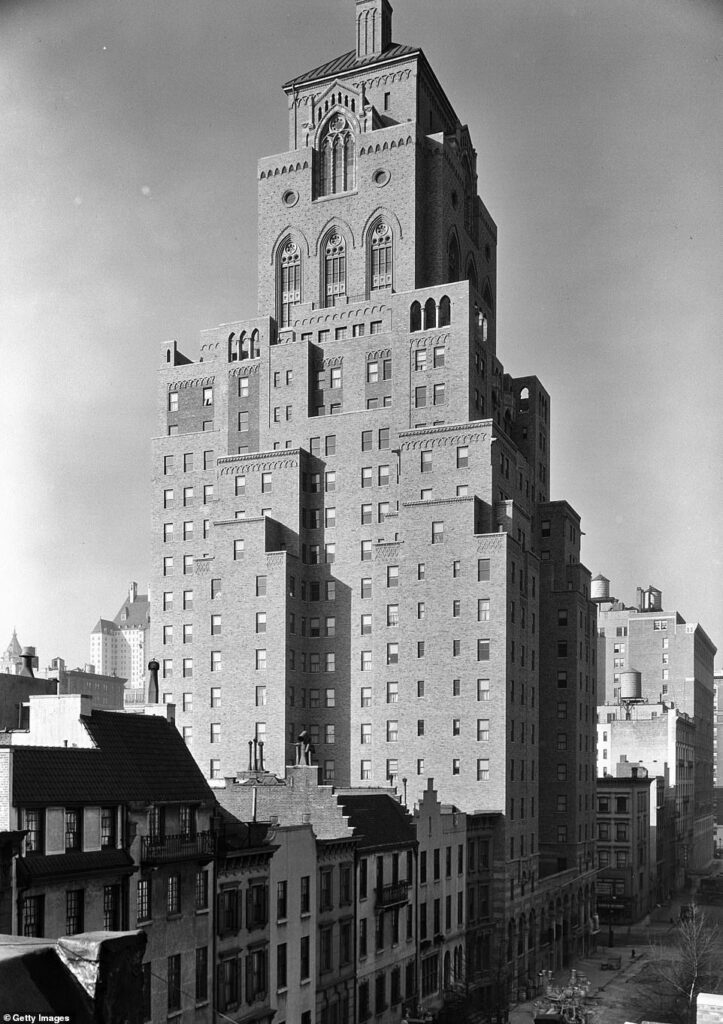
With the overall age and looks bias very clear, these discriminatory practices reflected The Barbizon’s obsession with youth, decorum, and beauty. But for those who gained entry, it offered a rare mix of safety, glamour, and opportunity as the grading enforced a charm-school-meets-dormitory atmosphere.
Famous residents included Grace Kelly, Sylvia Plath, Joan Didion, and Liza Minnelli. Plath (undoubtedly an “A” resident) notably fictionalized the hotel in her novel The Bell Jar as the “Amazon Hotel.” On Plath’s last night in The Barbizon, she famously threw all the clothing she had bought for her NYC internship at Mademoiselle magazine from the hotel’s roof. She later used this experience in her novel when her protagonist performs the same act as a symbol of the pressures placed on women to conform to narrow expectations of success and purity.
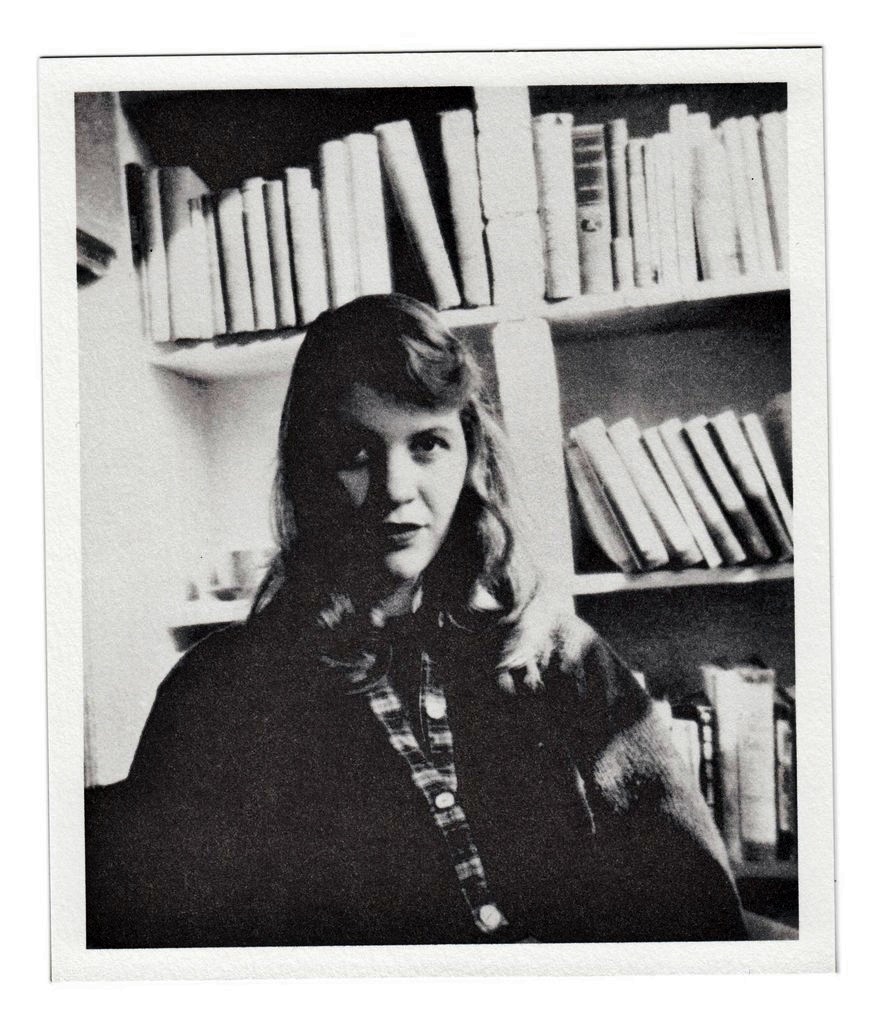
Despite its dispiriting entrance policies, The Barbizon represented the shifting culture of the 20th century. It became a hub for the “New Woman”: educated, urban, and increasingly independent. However, in 1981, it ended its formal policy of gender segregation and opened its doors to male guests. This shift reflected evolving societal norms and a declining demand for women-only housing. Today, the building houses luxury condominiums.
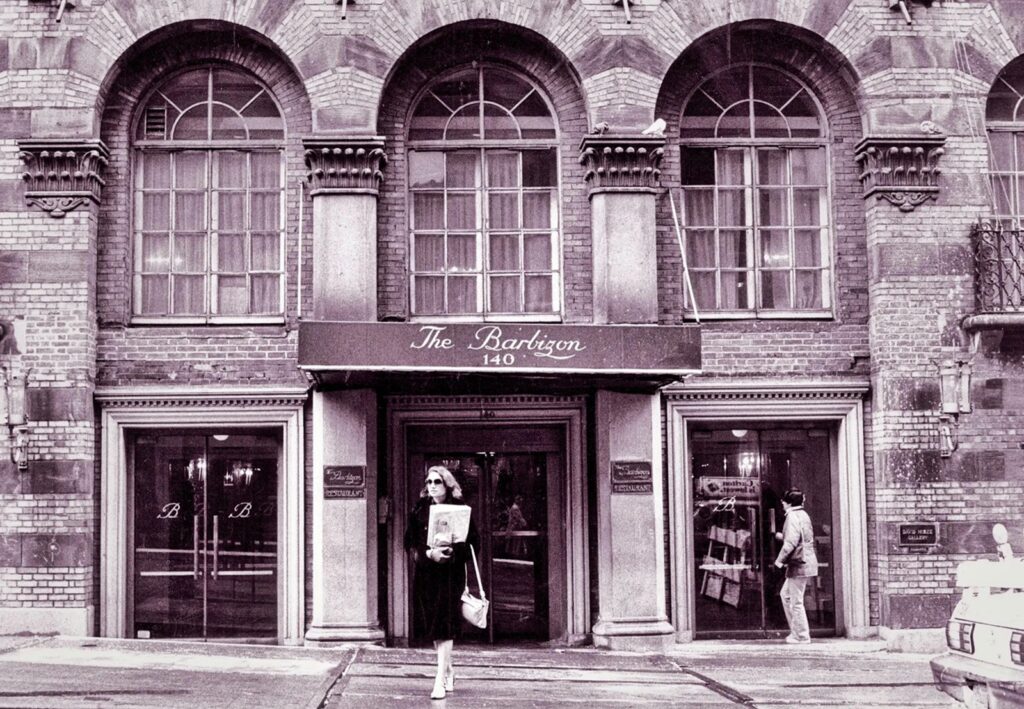
The Webster Apartments: Century-Long Sanctuary
Established in 1923 by Macy’s executives, brothers Josiah and Charles Webster, the Webster Apartments offered a more democratic alternative to The Barbizon. Though still selective and women-only, it was built for the specific purpose of providing affordable housing to working women in the 1920s, especially to those who worked for Macy’s. (The Webster Apartments)
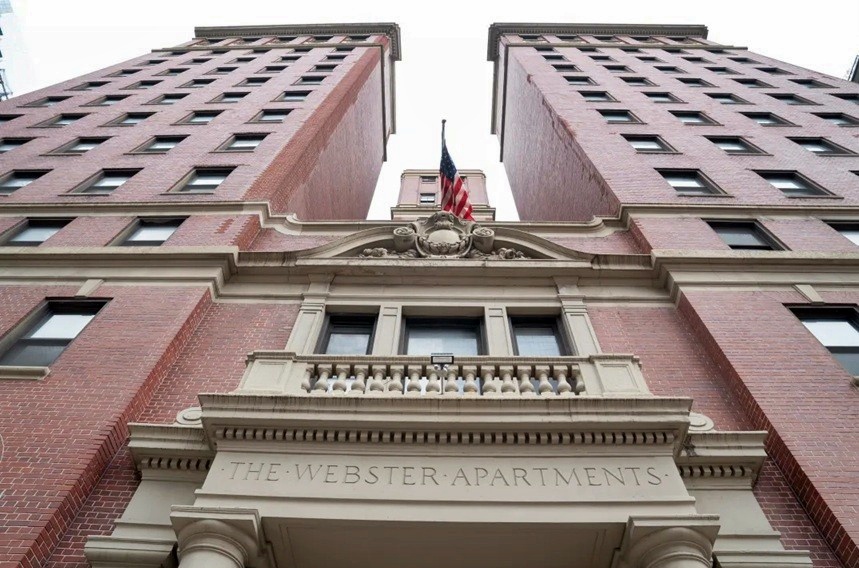
The Webster provided meals, laundry, a library, and private or semi-private rooms at affordable rates. It operated under the same rules as many hotels of this ilk did: no men above the ground floor, curfews, and limited overnight guests, but it became a beloved home for thousands of women over the decades. In the library hung a portrait of Charles Webster and the inscription underneath it read, “Having employed a large number of unmarried women…I have realized that the domestic environments of many of them are not conducive to their morals or health” (After 100-Years Women-Only Apartment Building to Shutter).

Incredibly, the Webster’s dream lasted nearly 100 years in the same Midtown location before being sold in 2023 to the nonprofit Educational Housing Services. However, this was not the end but a new beginning for Webster Apartments because, as of May 2025, a new Webster Apartments building opened in Downtown Brooklyn. And while the new women residents won’t find 1923 prices, the mission remains the same as it did in 1923: to provide safe, affordable housing for women-only as they navigate their careers and challenges in one of the world’s most expensive cities.
The Plight and Power of Black Women Seeking Housing
For Black women, the road to independent living in New York City was even more fraught. Most of the women-only hotels, including The Barbizon and The Martha Washington, excluded Black tenants well into the 20th century. In fact, it wasn’t until 1956 that The Barbizon welcomed its first Black tenant, artist and writer Barbara Chase, while she worked as a guest editor at Mademoiselle magazine. (The Hidden History of NYC Women-Only Hotels)
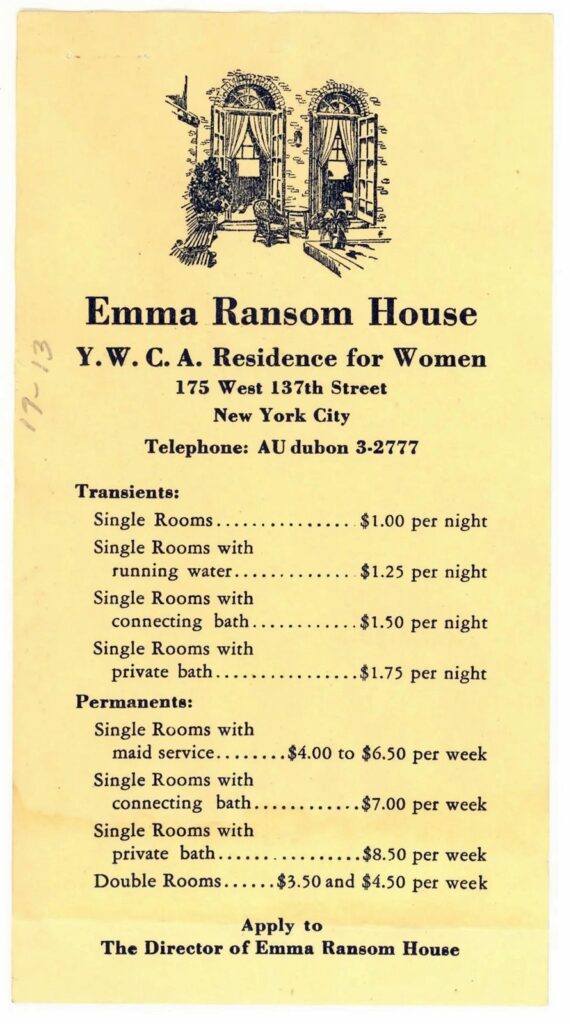
To counter this, Black reformers created their own spaces. The White Rose Mission, founded by Victoria Earle Matthews in 1897, provided housing, education, and job placement for Black women arriving in the city. The Harlem Emma Ransom House opened in 1921. With dormitory-style living for up to 200 women, it offered vocational training, community events, and safety from street harassment and housing frauds. In 1922, it had supplied lodgings to 1,781 transient Black women and 884 who stayed three weeks or longer. (Emma Ransom House For Women)
These spaces were not just shelters – they were centers of empowerment, culture, and resistance. They helped fill the void created by mainstream exclusion and offered Black women something society otherwise denied them: a room of their own. The Emma Ransom House even offered a swimming pool – a rare luxury for Black women at the time due to segregation.
It wasn’t until the 1950s and 60s that Black women began gaining entry to the previously all-white women’s hotels. Even then, much like women’s housing rights in general, progress was slow and hard-won.
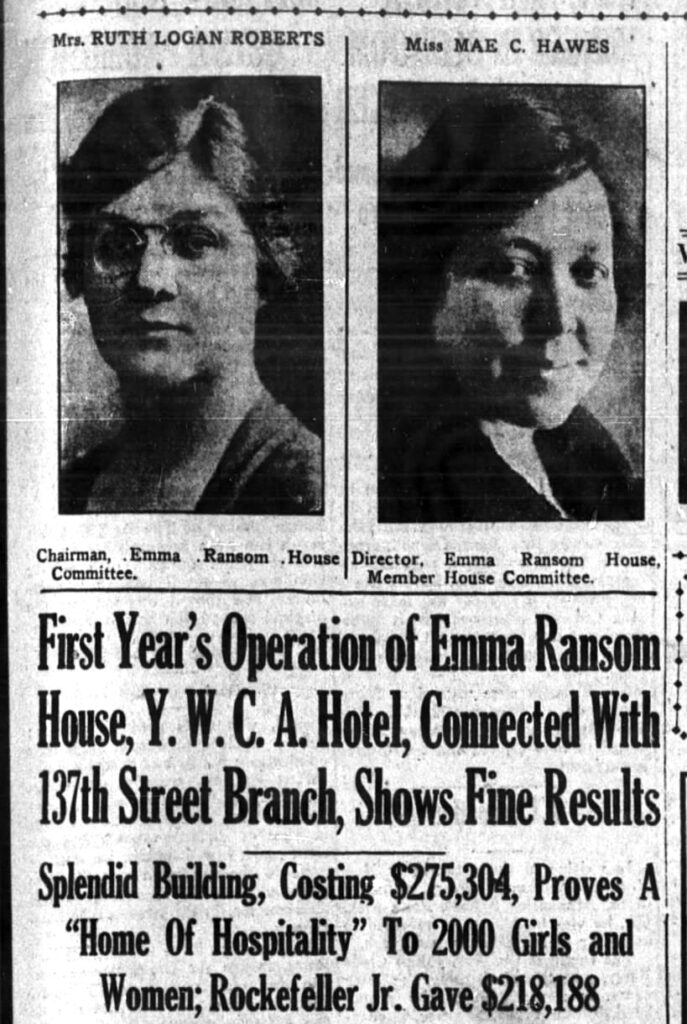
After the 1970s: Changing Laws
As the women’s movement gained momentum in the 1970s, the legal landscape began to shift.
- In 1971, New York State banned sex discrimination in housing. “Men-only” or “women-only” became outlawed.
- In 1974, the Federal Equal Credit Opportunity Act made it illegal for banks to deny loans or mortgages based on sex or marital status. It also gave women the right to open bank accounts and apply for credit cards for the first time without a husband or male co-signer.
These victories meant that women no longer had to rely on gender-specific housing and as more women moved into co-ed apartments, the demand for women-only hotels declined.
Today, women can rent, own, or cohabitate almost anywhere in NYC. But these early spaces tell the story of how we got here – and what it took to claim the right to live on one’s own terms.
Final Thoughts
Women-only residences were never just about housing. They were about carving out space – literal and symbolic – in a world that preferred women to be silent, dependent, or invisible. These hotels were about autonomy, dignity, and community.
And while most of these institutions are now gone, their legacy is all around us, written into the blueprints of every apartment leased by a single woman who no longer must ask a man for permission or to vouch for her virtue.
References:
“After 100 Years, Women-Only Apartment Building to Shutter.” https://columbianewsservice.com/2022/12/28/after-100-years-women-only-apartment-building-to-shutter
“At the Webster Apartments: One of Manhattan’s Last All-Women’s Boarding Houses.” https://www.theparisreview.org/blog/2024/05/28/at-the-webster-apartments-one-of-manhattans-last-all-womens-boarding-houses/
“Emma Ransom House for Women.” https://www.ny1920.com/feb-10-1923
“The Hidden History of NYC’s Women-Only Hotels.” https://www.untappedcities.com/women-only-hotels-nyc/
“On her own: The legacy of women’s hotels in New York City.” https://www.6sqft.com/on-her-own-the-legacy-of-womens-hotels-in-new-york-city/
“The Webster Apartments, New York City.” https://theclio.com/entry/22165
Images:
- Barbizon Hotel01: https://www.thecut.com/2015/03/why-i-live-in-an-all-women-boardinghouse.html
- Barbizon Hotel02: https://ephemeralnewyork.wordpress.com/2008/09/13/where-single-girls-stayed-in-new-york-city/
- Barbizon Hotel03: https://www.messynessychic.com/2024/03/14/check-into-the-bygone-era-of-single-ladies-hotels/
- Barbizon Hotel04: https://www.wsj.com/arts-culture/books/womens-hotel-review-a-colony-in-manhattan-02195b70
- Barbizon Hotel05 Plath: https://fineartamerica.com/featured/sylvia-plath-bettmann.html?product=art-print
- Emma Ransom House01: https://www.ny1920.com/feb-10-1923
- Emma Ransom House02: https://www.newspapers.com/article/the-new-york-age-ywca-emma-ransom-hous/22256384/
- Martha Washington Hotel01: https://www.architecturaldigest.com/story/the-fascinating-history-of-women-only-residences
- Martha Washington Hotel02: https://thestreetandthecityul.wordpress.com/2016/03/02/march-2-1903-the-martha-washington-hotel-opens-in-manhattan-new-york-the-first-hotel-exclusively-for-middle-class-women/
- Martha Washington Hotel03: https://en.m.wikipedia.org/wiki/File:Elevator_girl,_Martha_Washington_Hotel_in_1917.jpg
- Martha Washington Hotel04: https://www.6sqft.com/on-her-own-the-legacy-of-womens-hotels-in-new-york-city/
- Martha Washington Hotel05: https://commons.wikimedia.org/wiki/File:Arriving_–_Martha_Washington_Hotel_LOC_17255810841.jpg
- Stewart Hotel01: https://nycvintage.blogspot.com/2011/05/nyc-vintage-image-womens-working-hotel.html
- Webster Apartments01: https://www.nydailynews.com/2023/11/20/the-webster-apartments-housing-created-for-nycs-independent-young-working-women-turns-100/
- Webster Apartments02: https://websterapartments.org/
- Webster Apartments03: https://websterapartments.org/rooms/studio-large-single-with-premium-preferred-view/
Further Reading:
- “All the Single Ladies: Women-Only Buildings in Early 20th-Century New York.” https://www.nyhistory.org/blogs/all-the-single-ladies-women-only-buildings-in-early-20th-century-new-york
- “Check into the Bygone Era of Single Ladies Hotels.” https://www.messynessychic.com/2024/03/14/check-into-the-bygone-era-of-single-ladies-hotels/
“A New Chapter for Webster Apartments.” https://websterapartments.org/a-new-chapter-for-webster-apartments/

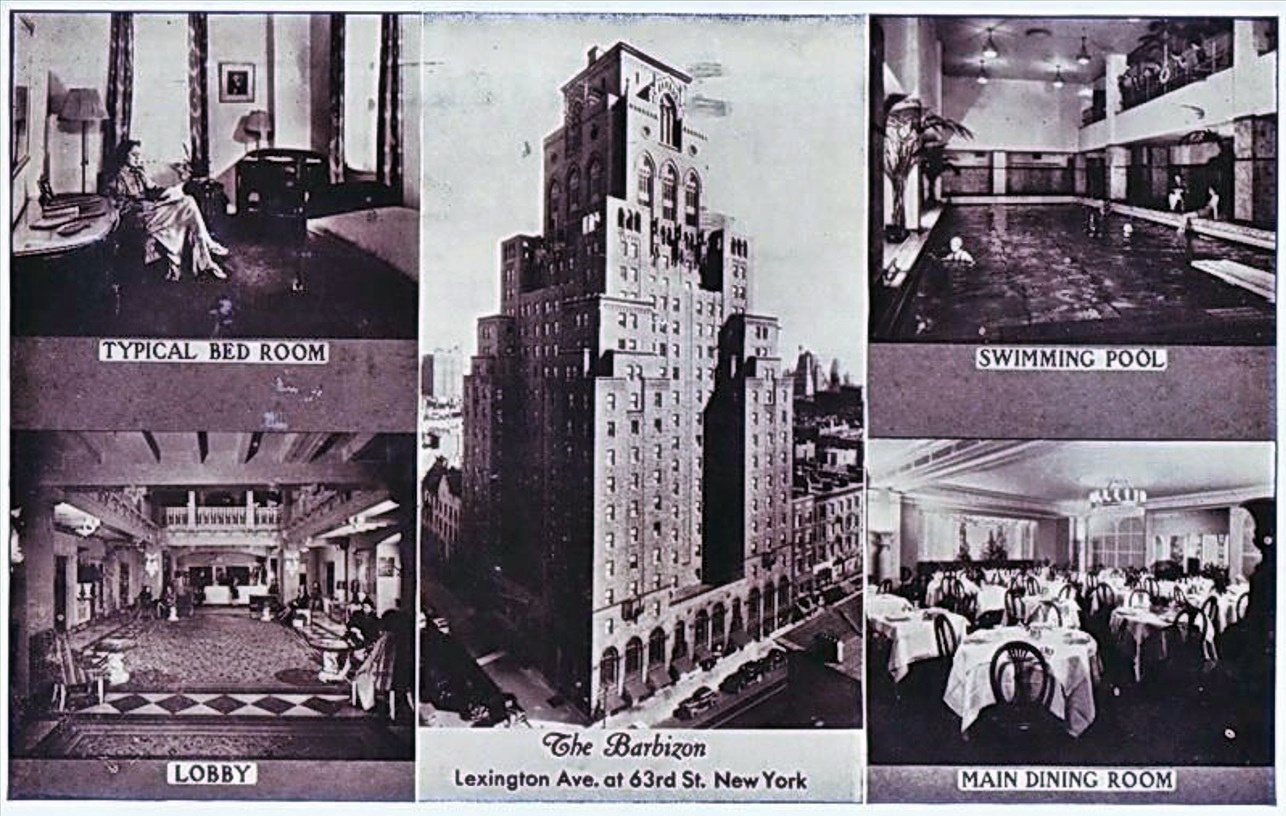
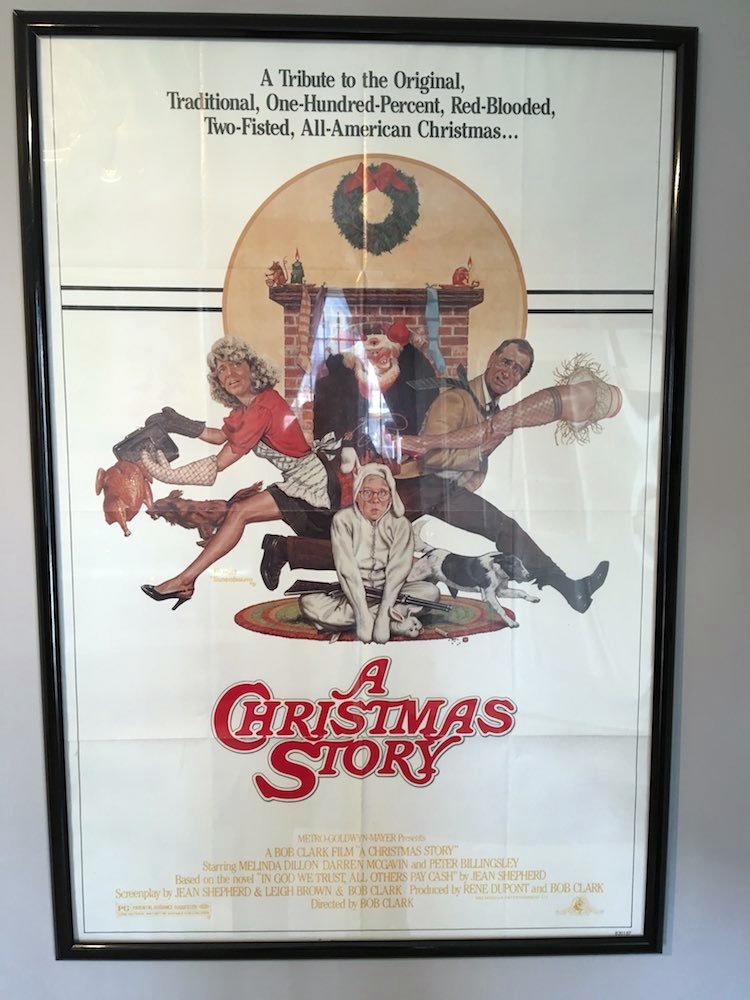
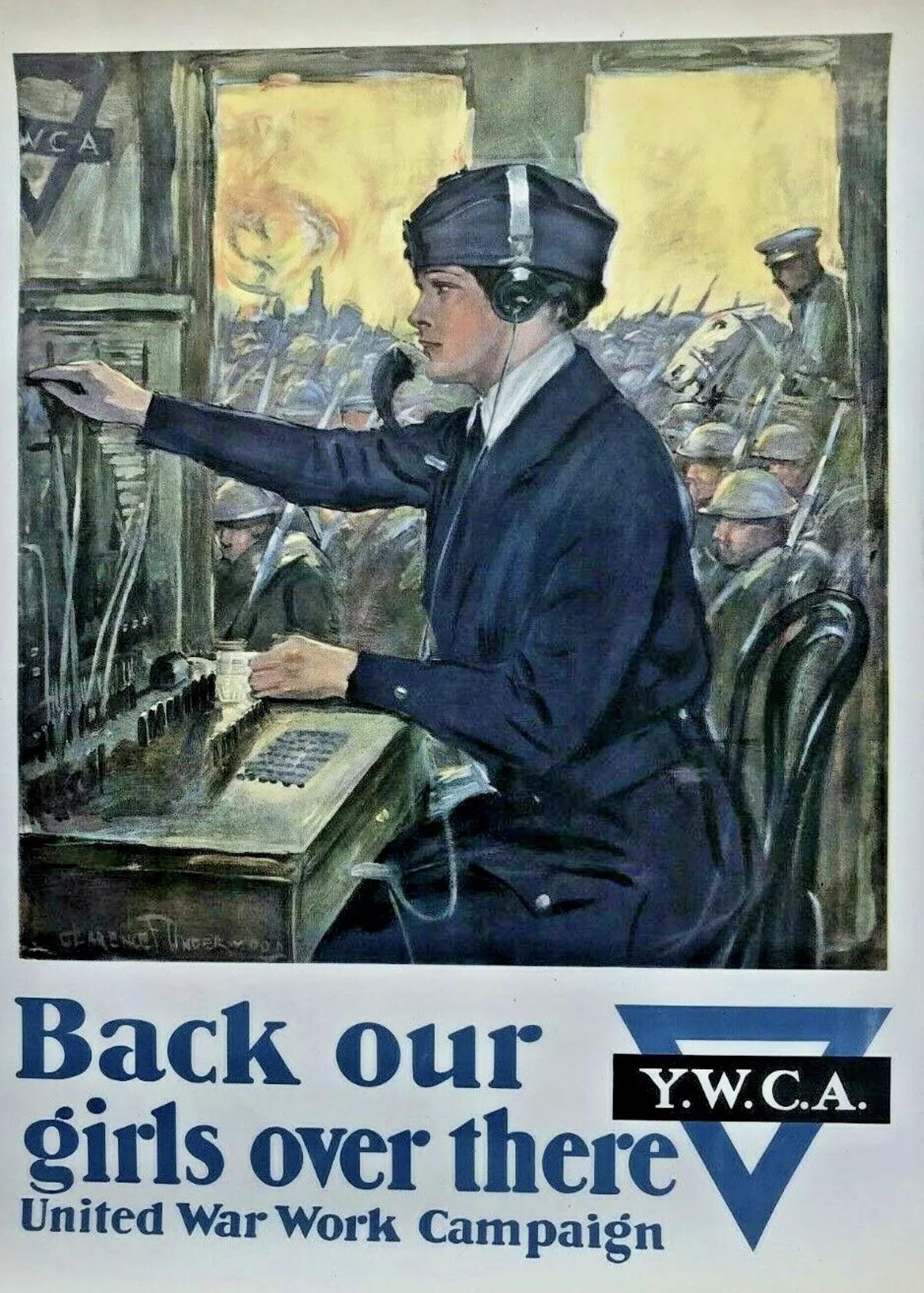
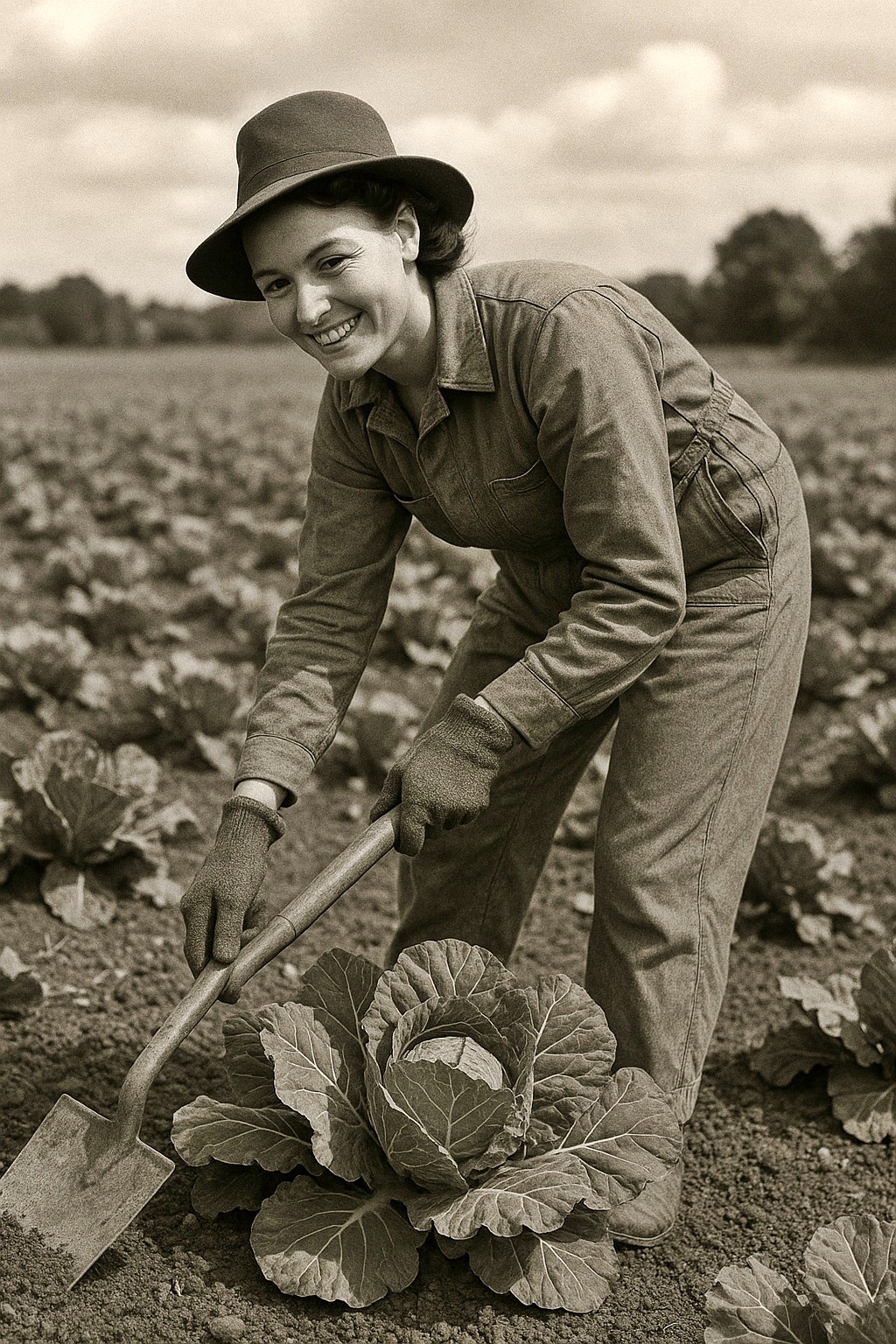

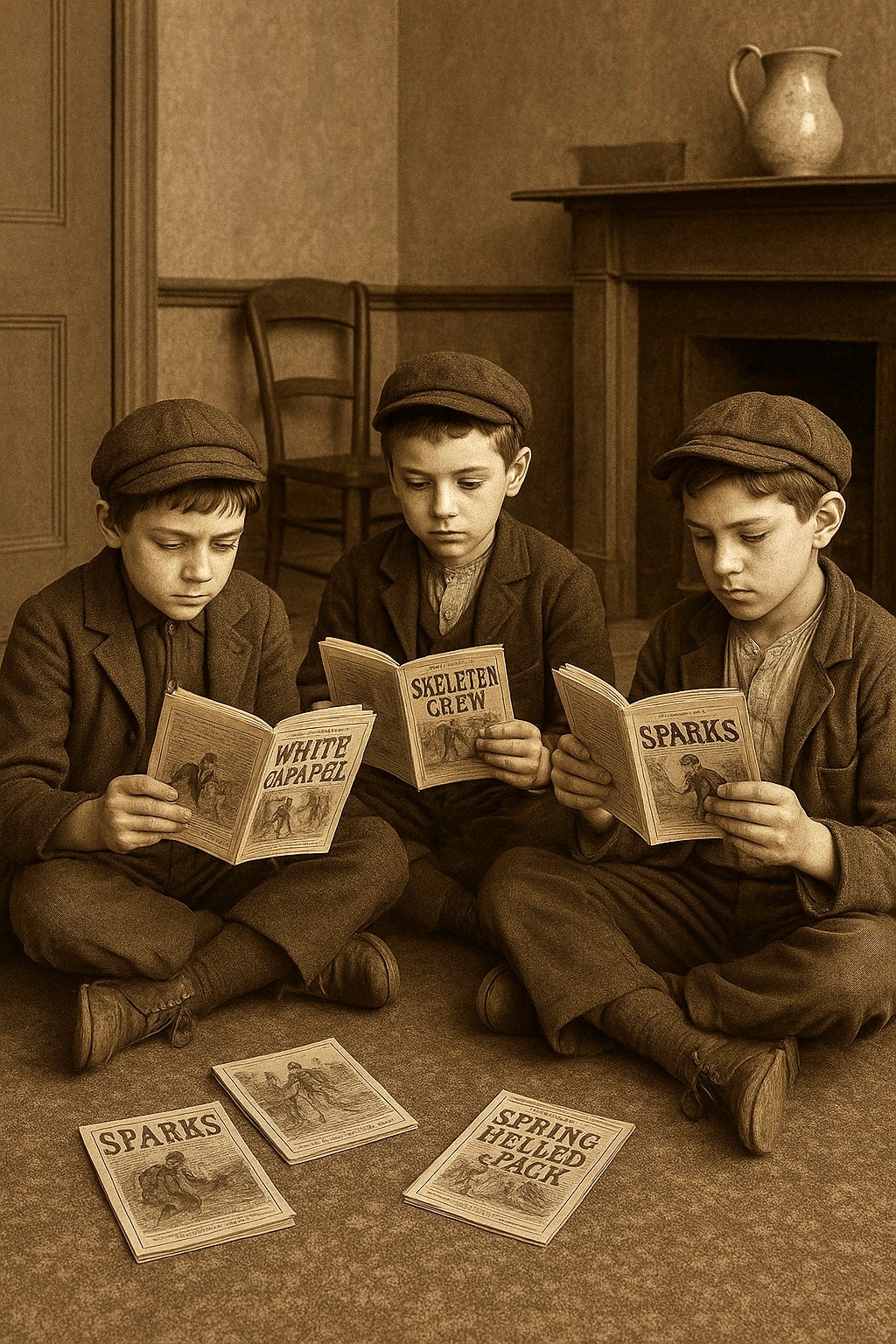

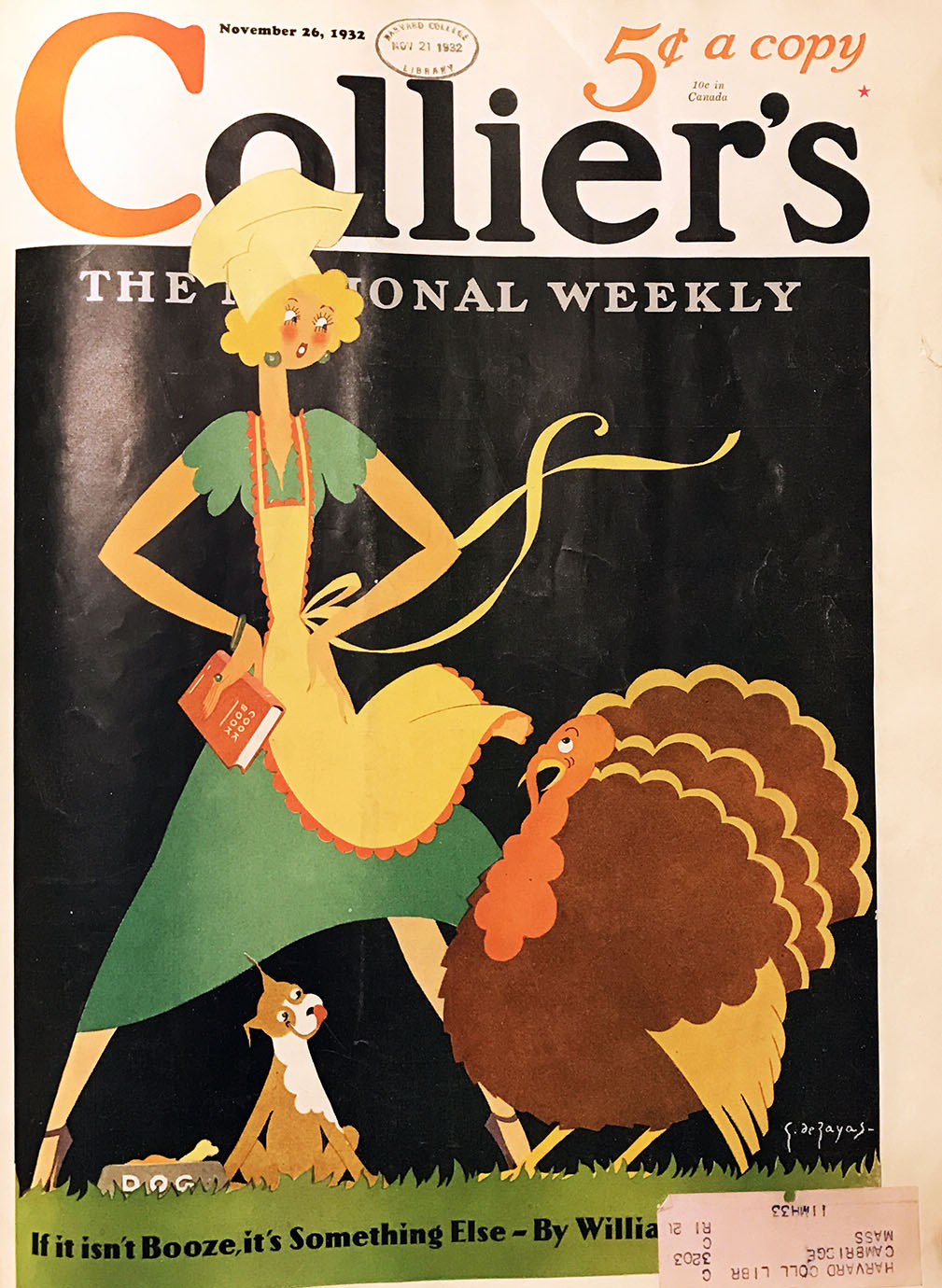
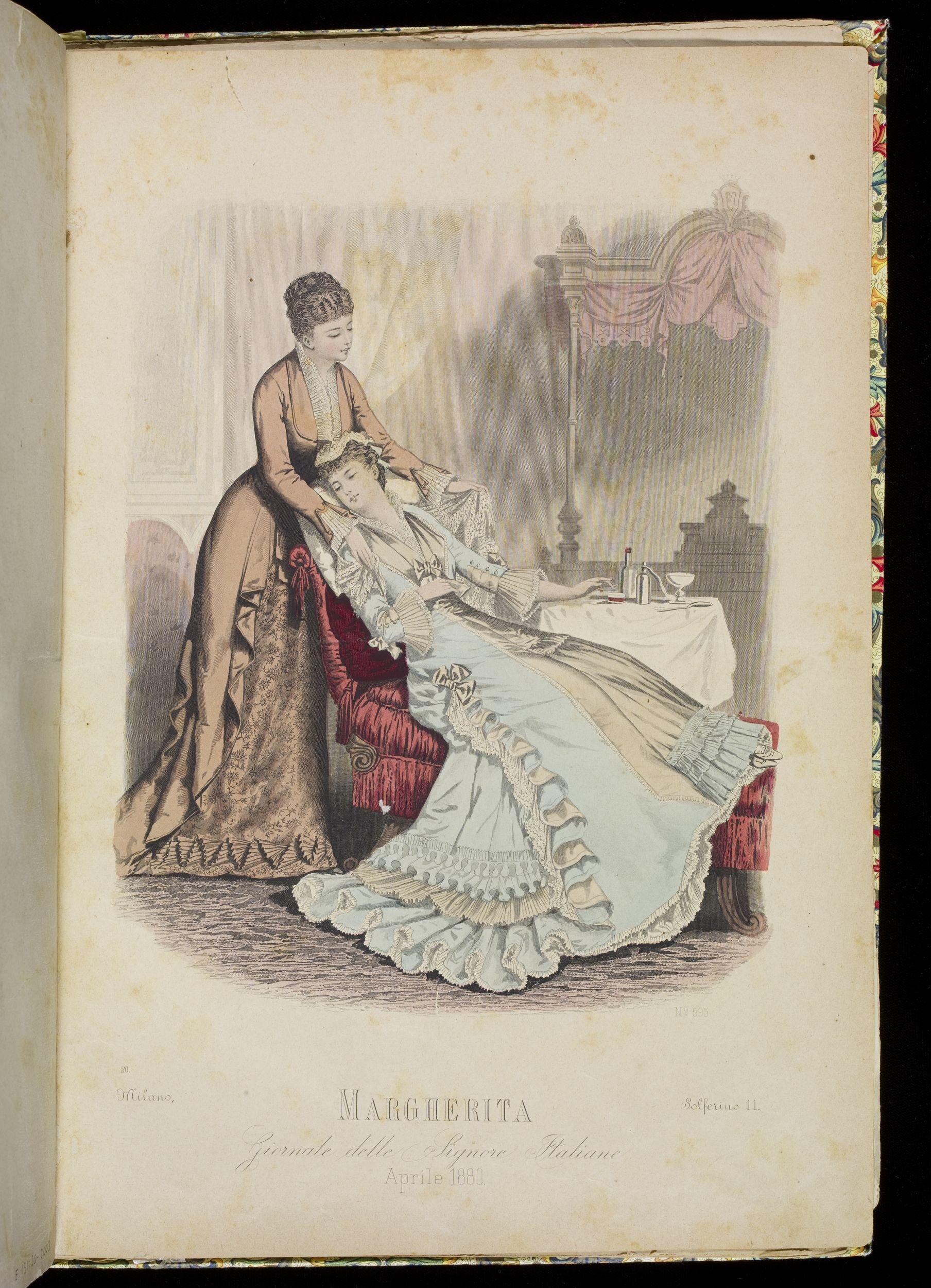
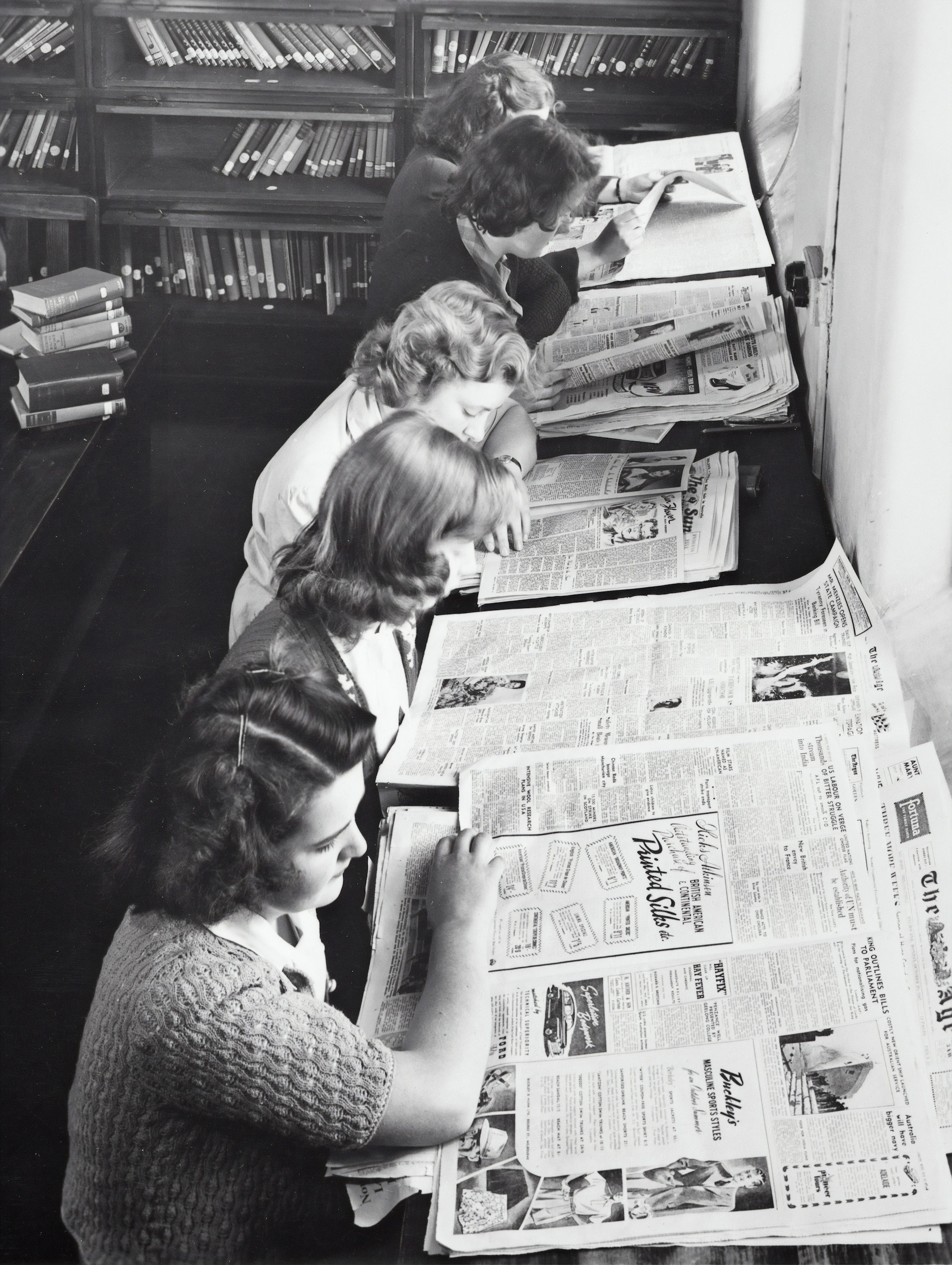

Leave A Comment